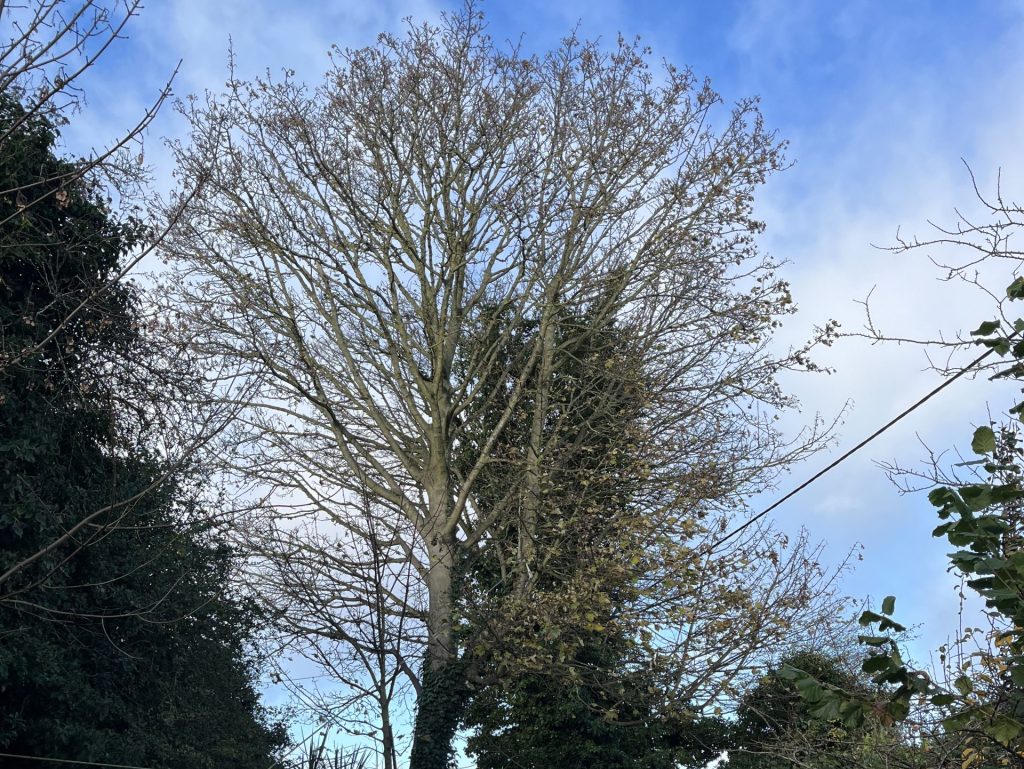
Case Study: Arboricultural Management in a Domestic Setting
Overview
In a residential area, the management of Acer pseudoplatanus (sycamore trees) and boundary vegetation between two properties in Napchester Road, Dover, was undertaken to ensure the health and structural integrity of the trees, enhance the aesthetic appeal of the landscape, and comply with safety regulations. This case study details the arboricultural practices employed, the rationale behind each decision, and the adherence to British Standards for tree work.
Context
The project involved two primary tasks: the management of two ivy-clad sycamore trees located towards the boundary with No.1 The Drove and the reduction and trimming of various trees/shrubs forming the boundary between 15 & 13 Napchester Road. The work was scheduled in a domestic setting, requiring careful consideration of the impact on the residents and the surrounding environment.
Objectives
1. Sycamore Trees Management: To sever ivy growth and reduce the crown of the sycamore trees, mitigating safety risks while ensuring the trees’ health and compliance with BS 3998(2010) “Recommendations for tree work.”
2. Boundary Vegetation Management: To reduce the height and trim the boundary vegetation, improving the landscape’s appearance and preventing overgrowth into residential areas.
Actions Taken
1. Ivy Severance: A 1-metre clear band of ivy was severed from the base of the sycamore trees, allowing the upper sections of ivy to die off. This action was crucial to prevent the ivy from outcompeting the trees for resources and adding unnecessary weight and wind resistance.
2. Crown Reduction of Sycamore Trees: The crown of the sycamore trees was reduced by selectively removing 2-3 metres from the branch tips, equating to a 25% reduction in leaf mass. This measure was within the guidelines of BS 3998(2010), ensuring the tree’s continued health and structural integrity. The reduction was carefully planned to avoid excessive stress on the trees, which could lead to poor re-growth and future instability.
3. Height Reduction of Boundary Vegetation: The height of the trees/shrubs along the 23-metre boundary was reduced to 4 metres AGL, aligning with the top of the neighbour’s fence. This action was taken to maintain a neat boundary line and prevent vegetation from encroaching on adjacent properties.
4. Trimming of Boundary Vegetation: The inside face of the boundary vegetation was trimmed back to expose more of the lawn, enhancing the aesthetic appeal and usability of the residential space.
Considerations
– The work was planned to avoid the bird nesting season, adhering to wildlife protection guidelines.
– Coordination with UK Power Networks (UKPN) was necessary for the sycamore trees near power lines, ensuring safety and regulatory compliance.
– The project’s execution in a domestic setting required minimal disruption to the residents and consideration of the visual impact on the landscape.
Outcome
The arboricultural management practices resulted in healthier, more manageable trees and vegetation, enhancing the domestic landscape’s safety and aesthetic appeal. The project demonstrated the importance of adhering to established standards and guidelines, such as BS 3998(2010), and highlighted the need for professional expertise in managing trees in residential areas. The collaboration with utility providers and consideration of environmental and residential impacts ensured the project’s success and sustainability.
